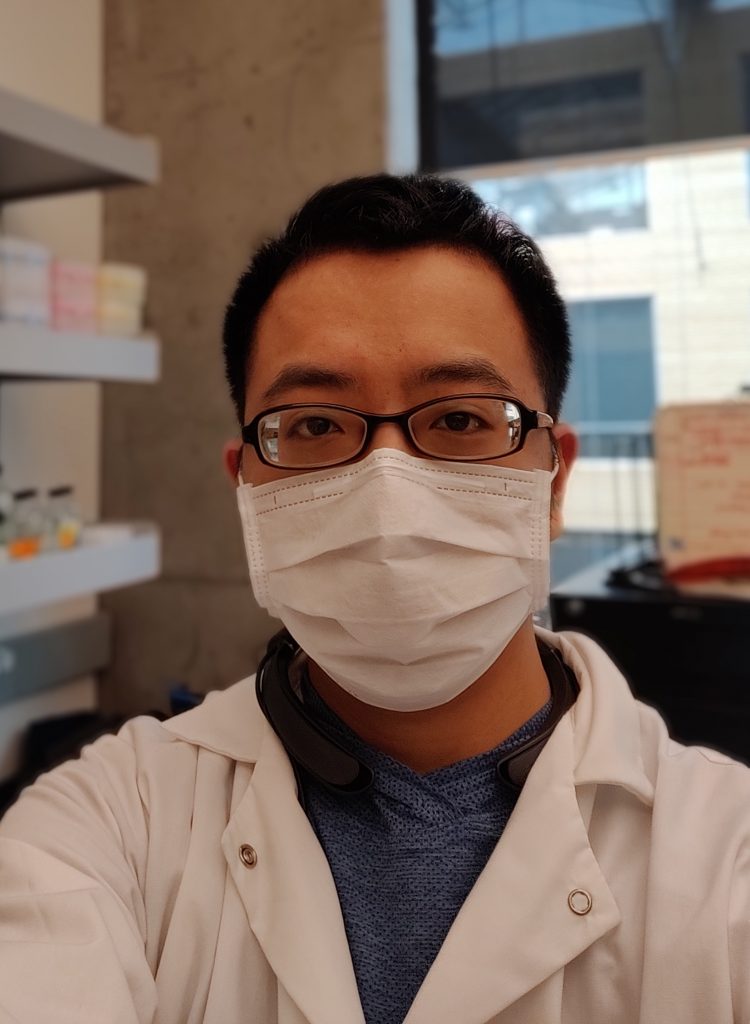BMBDG Seminar: PhD Exit Seminar – Jinhong Hu

Title: “Structural characterization of the Type 3 secretion system needle complex by single particle cryogenic electron microscopy”
Abstract: “The bacterial type III secretion system, or injectisome, is a syringe-shaped nanomachine essential for the virulence of many pathogenic Gram-negative bacteria. A major functional subcomplex of the injectisome, the needle complex, is a 3.5MDa complex formed by more than ten unique proteins. The needle complex forms a continuous channel spanning both the inner and outer membranes of Gram-negative pathogens, created by three highly oligomerized inner and outer membrane hollow rings and a polymerized helical needle filament. The effector proteins secreted through this channel, which vary amongst different bacterial species, are essential for subsequent pathogenicity. Thus, structural studies of this complex can provide important atomic level information for understanding complex assembly and function of the injectisome as well as potentially development of new antivirulence drugs or vaccines to combat infections in susceptible human, animal and plant hosts pathogens by developing new drugs or improve the existed ones.
The first high-resolution needle complex structures determined by cryogenic electron microscopy (cryo-EM) here shows the atomic details of the inner and outer membrane protein complex and the needle filaments. The outer membrane component of the needle complex belongs to the secretin family, a giant necessarily gated pore common and essential to other bacterial secretion systems but which had remained largely uncharacterized at the atomic level until recent work including major contributions as outlined in this thesis. Notably, the structures of the “open” conformation of the type III secretion system secretin and the needle filament “substrate” which passes through its inner channel revealed the gating mechanism for the first time in the secretin family. Further, the structures of the dual nested rings that form the major inner membrane structural component of the needle complex shows remarkable similarity regardless of the assembly stages, inferring a highly stable foundation for the other components of the system to pack and function within. The snapshots of multiple needle complexes at different assembly stages revealed multiple new structures, the dynamics of the assembly, and showed the sequence of the assembly process. The structural information also answered several long-standing additional questions, such as the mystery of the apparent symmetry mismatch between the inner and outer membrane complex of prior structures, and the fold, span and functional role of the historically named “inner rod” protein which this thesis works shows is not a rod at all but an adaptor to set the needle helicity and anchor it to the stable inner membrane platform.”
Monday, December 13, 2021 at 2:30 pm at LSC #3 and or join by Zoom.
Hosted by: Dr. Natalie Strynadka
MICHAEL SMITH DISTINGUISHED RESEARCH LECTURE: PROFESSOR DAME CAROL ROBINSON

“Title: A new phase for structural Biology”
Professor Dame Carol Robinson, Director of the Kavli Institute for Nanoscience Discovery, Department of Chemistry, University of Oxford.
Abstract: While cryo-EM has transformed our view of the structures of protein assemblies, behind the scenes gas phase structural biology has been emerging. Over a number of decades mass spectrometrists have revealed that the folding and topology of protein complexes can be retained in the gas phase, if appropriate experimental parameters are applied. These discoveries led to early compelling studies of antibody-antigen complexes, viruses, ribosomes and molecular chaperones. More recently ‘snapshots’ of membrane protein complexes in the gas phase have been particularly enlightening. Widely considered the most challenging of protein complexes, but yet the most important given their physiological roles, the gas phase turns out to be an excellent medium in which to interrogate hydrophobic membrane proteins. When encased in detergent micelles, or other membrane mimetics, the effects of lipids on stability, conformational change, dynamics and protein interactions are revealed. As such mass spectrometry is informing membrane embedded efflux pumps (often implicated in antibiotic resistance mechanisms) assembly of membrane protein interfaces (primarily in solute carriers) and receptor mediated signalling pathways (typically of GPCRs). In this lecture I will trace the history of these developments using selected highlights to illustrate progress made to date. Finally, I will describe exciting future developments – soon to be realised.
Monday, December 06, 2021 at 10 am PST via Zoom.
Hosted by: Dr. Joerg Gsponer
